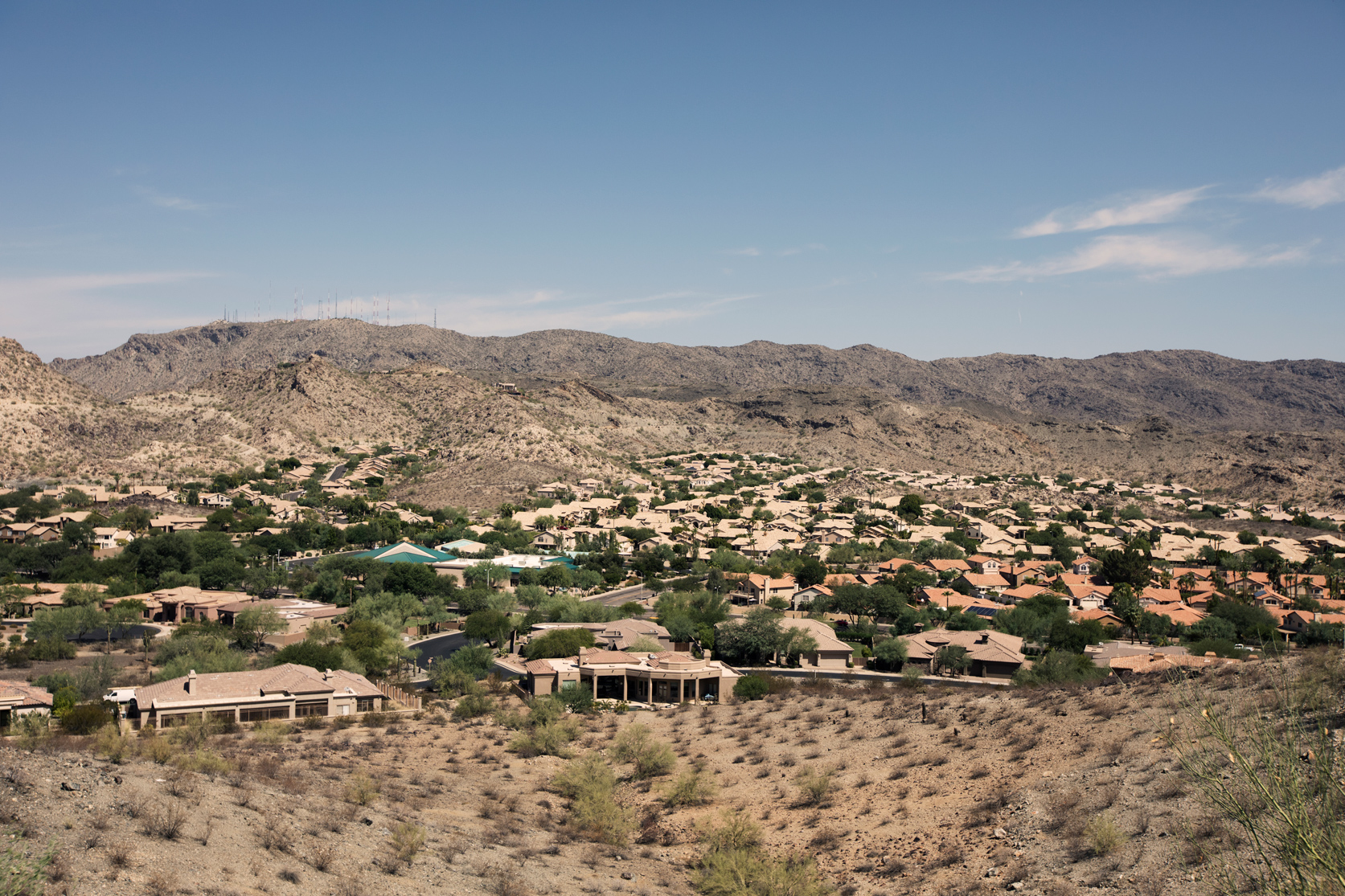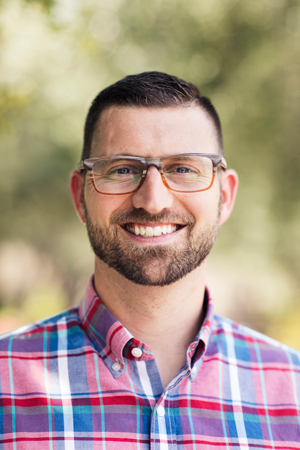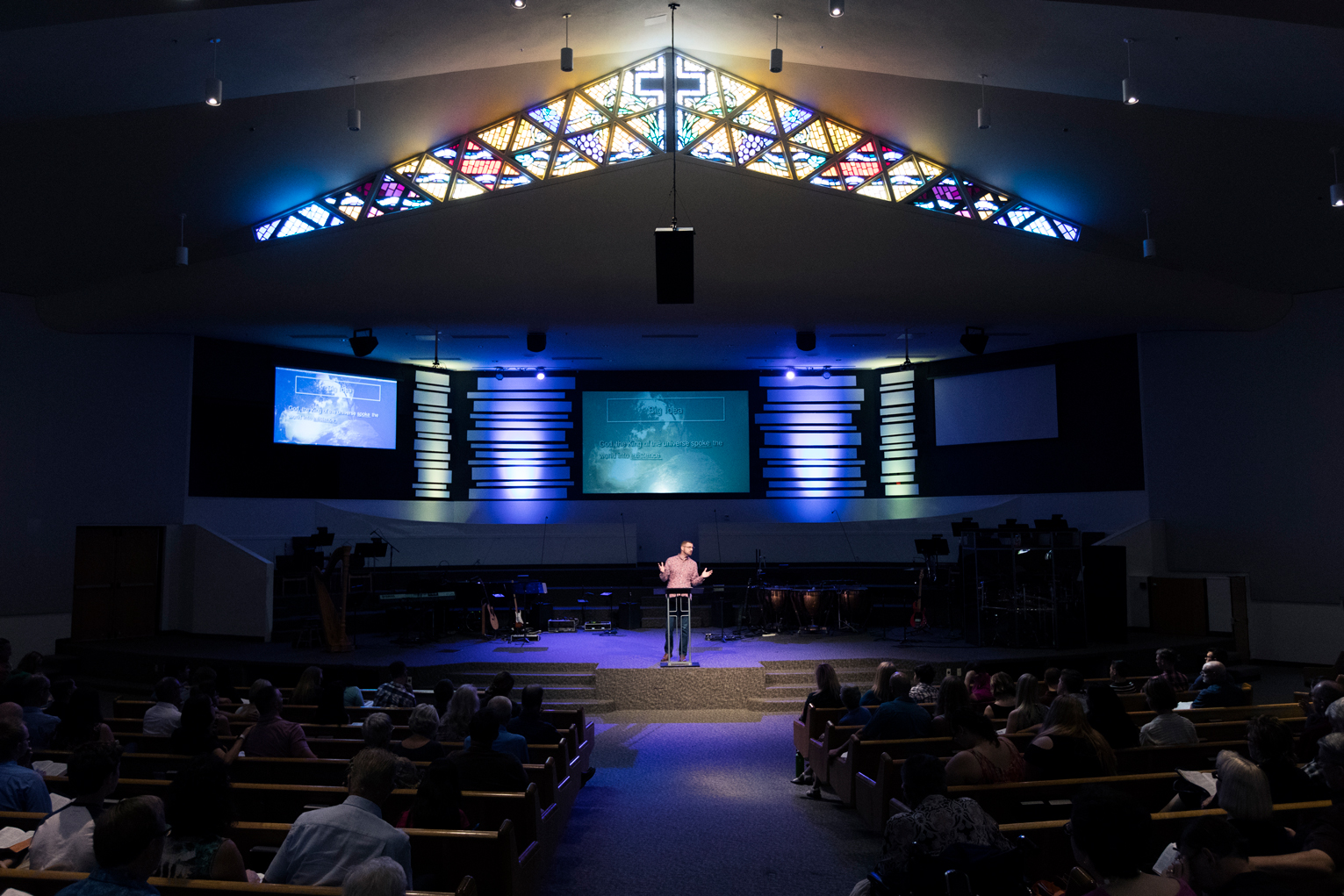The organgey, stone-laced landscape of the southwest already screams that you’re somewhere different from the dense green of the Bible Belt. For Nate Millican, the desert of Arizona represents a mission field. His family, he says, is thriving in their new home of Phoenix. But that doesn’t change the fact that he’s 1,700 miles away from his native Kentucky, two timezones away from extended family and his home church.
The church Millican leads provides rich community, and that’s been a saving grace for his family.
“Our community is life-giving to me,” he said, talking about his own participation in a community group. This is important for him and his family, because God’s call to Phoenix was clear — but that doesn’t make it easy.
“What makes it hard for me personally is being removed from family and friends,” he said. “I’m 1,717 miles away.”
A Call to the Desert
To call Millican a Kentucky native isn’t quite accurate. And in many ways, he was born to live wherever God leads. “My dad was a pilot, so I was nomadic,” he said. “Where am I from? It’s a great question.”
By the time Millican was 16 years old, he’d already lived in Mississippi, Oklahoma, Delaware, Rhode Island, Washington state, Delaware again, and finally Kentucky.
By the end of his high school years, the Millicans lived in Louisville. Despite initial plans to go to the Air Force Academy and join the family business, Millican enrolled to study marketing at the state’s Big Blue university. He liked that Lexington is fully 70 miles away from Louisville, and he liked that it is only 70 miles away from home.
He explained, “I could have my own life, I could come home when I needed to.”
Plus, he was “getting really involved” at his Louisville church, Highview Baptist. The student pastor there, a seminary student named Jimmy Scroggins, discipled and mentored Millican. And even after he moved to Lexington, he drove back to Highview almost every weekend. By the time he came to the end of college, Millican knew his future lay neither in a military plane nor a marketing firm. The relationship with Scroggins and experience of the ministry at Highview fostered in Millican a sense of God’s call toward ministry; he wanted to replicate for others the kind of hands-on mentorship he received.
During his senior year, Millican did manage to stay in Lexington one weekend. He attended a surprise birthday party, where he met a girl named Lauren. He enrolled in the master of divinity degree program at Southern Seminary immediately after college and, in April of 2003, Millican used his first spring break to take a honeymoon.
Though Millican said it didn’t feel this way at the time, the life of ministry began to move quickly for the newlyweds.
Before long, Millican worked on staff at Porter Memorial Baptist Church in Lexington and then at Highview as a college pastor. And before he graduated from the seminary, Millican got in contact with a church in Orlando, Florida, and soon after accepted a job as a discipleship pastor at the megachurch Aloma Baptist. After three years there, he came back to the Louisville area, taking a senior pastor role at Oak Park Baptist Church in nearby Jeffersonville, Indiana.
The church grew steadily, from about 150 members to almost 350. Then Kevin Ezell, who had been Millican’s pastor at Highview and by then was the president of the North American Mission Board, sent him a text message: “Hey, would you be interested in pastoring in Phoenix?”
The Pre-Christian Valley
The Phoenix metro area houses around 4 million people. You’ve heard that western society is post-Christian. If you talk to Millican about it, he’ll tell you the western United States isn’t — but not because of revival or some gospel preservation or lasting, cultural Christian appeal. No, Millican will tell you the west isn’t post-Christian because it was never “Christian” to begin with: The American west is a pre-Christian society.
“There’s never really been a Christian presence in the West,” he said, not like in the American South or the Northeast.
So when Ezell reached out, Millican said, “Phoenix, wow. That sounds kind of exciting. If Kevin is taking the time to text me about it, I’m intrigued.”
The church Ezell talked about was Foothills Baptist Church, a Southern Baptist church nestled in the neighborhood of Ahwatukee, an upwardly mobile community full of families, just southwest of the Phoenix city center. After Millican preached in-view of a call, the members of Foothills voted 300 to 1 to call Millican as senior pastor.
Millican, Lauren, and their then-three kids — Luciann (9), Lydia Grace (8), and Samuel (6) — moved west. (Their 17-month old, Laureleigh Joy, was born in Phoenix.)
“We live in a very affluent area,” he described. “People have very little margin with their money or with their time. … We have M.D.s and Ph.D.s and people who are entrepreneurs — that’s the demographic at Foothills.”
Because of that, he says, many of the people with whom he interacts have no space for faith at all, much less Christianity. And, what’s more, they don’t see the value of making space for spiritual things. It’s a hyper-individualistic culture, one where sports like hiking and kayaking get more traction than team sports — a massive collection of people devoid of community.
That’s what Millican is doing at Foothills: He’s trying to build a church culture that compels the people in Ahwatukee looking for connection, and a church that connects them to the gospel. When he arrived, Millican led the church through a year-long process of discovering and shaping the church’s mission: Engage people to put Jesus first for the sake of others.

And the congregation is buying in. Millican says moving the culture in this direction isn’t happening fast, but it is happening. And he’ll be the first to tell you that he’s a beneficiary.
The Lessons of Emergency Surgery
Millican’s mom, back in 2009, was at an audition for a church choir special when she collapsed. She’d suffered an aneurysm that “leaked,” and doctors rushed her into emergency brain surgery. In the realm of brain issues, what Mrs. Millican went through was considered mild, and she recovered well.
Then in 2013, Millican’s father also suffered an aneurysm rupture in the same part of his brain, a much more severe condition. After being rushed to the hospital and undergoing his own emergency brain surgery for between five and six hours, he too recovered.
Both of the elder Millicans joined the 50 percent of those who suffer aneurysms and survive. The odds, Millican said, of two people each having the same brain problem in the same lobe are wildly low.
Doctors and specialists warned the Millican children that this increased their own risk of bleeding on the brain. Millican, along with his brother and sister, each got checked.
One of them indeed had a brain problem: Nate.
“I was found to have a small, like one-to-two-millimeter aneurysm,” he said. “It was just there; they don’t know how it happened.”
Doctors told him the issue seemed manageable and he should just make sure to have a scan every five years to monitor it.

Fast forward to 2017, seven years later, and Millican went in to get his brain scanned. A neurologist in Phoenix said basically the same thing as the doctors in Louisville. But as a final check, the doctor referred him to an aneurysm specialist.
The specialist who looked at Millican confirmed: “You do have an aneurysm; it’s one to two millimeters.” But his diagnosis of the problem was life-changingly different: “But given your parents history, I’m quite certain we’re going to [take action]. … The only way to treat an aneurysm is brain surgery.”
Another specialist, who happened to be one of the world’s most prominent brain surgeons, explained: “If you had an aneurysm and they found it today, they would say, You’re at a one percent chance it’ll rupture or bleed.” But because both of his parents suffered aneurysms in the same lobe, the doctor explained he was actually sitting at more like a 20 percent probability of a “rupture or bleed.”
“It would be medical malpractice for us not to do brain surgery,” he said.
“I was stunned,” Millican said. “I got in my car and I wept.”
He had a craniotomy — a surgical opening of the skull — two weeks later to fix his aneurysm. Millican now says this surgery taught him perhaps more than anything else in his life. He is quick to list four main lessons.
“I learned gratitude and compassion,” he explained. “I think I’m more apt to listen, to be empathetic and sympathetic to sufferers.
“I learned finiteness,” he said. “I couldn’t walk from here to the other side of the room without being completely exhausted; I didn’t have the energy. I couldn’t read, I couldn’t write, I couldn’t even pray. I stuttered and had a hard time collecting my thoughts.
“I had a work ethic that wasn’t sustainable, and, worse than that, I don’t think it honored Jesus. I learned rest. ”

Southern Seminary and Albert Mohler
The lessons of Millican’s brain surgery have made a lasting impression on him and on his ministry, according to him. He can point to myriad ways those four main things he learned have shaped who he is on the other side of the craniotomy. It also helped form community in Phoenix, as people he’d only been pastoring for about a year rallied to support him and his family.
It also made him more grateful for the community he has spread around the country.
“Dr. Mohler has a saying: I’m not going to get it exactly right, but basically it’s ‘Do ministry with a band of brothers’,” Millican said. “And Southern Seminary was formative in that it gave me a group of guys; I have a band of brothers who have made an indelible impression on me.”
He talks about guys leading ministries all around the world and how the bonds they formed at Southern Seminary still hold them together. He speaks just as fluidly about how some of the professors gave him a vision for Scripture that he still holds onto, particularly New Testament professor Brian Vickers.
“I remember Brian Vickers’ talking about where Jesus says, “believe in me and streams of eternal life are going to swell up in you,” Millican remembers. “His imagery and how he walked through that with so much passion was contagious, and I’ll never forget it.”
For the whole Millican family, Southern Seminary holds a special place.
The elder Millican, General Nat Millican, has been on the seminary’s Foundation Board, and is this year starting a term on the Board of Trustees. The family relationship with Southern goes back to a connection with the Mohlers.
“My mom and Mary Mohler are close friends,” he explained. “Dr. Mohler was teaching pastor at Highview when we came, and my dad has been involved in leadership at Highview since then. The Mohlers have just been friends of the family. My family legitimately loves the Mohlers.”
The kind of community Millican experienced in Kentucky, at Highview and at Southern Seminary, inform the very reason he moved his family those 1,700 miles away: Because he owns a vision for how the gospel shapes the lives of believers and how compelling that kind of “life-giving” community can be to a culture that has never experienced it.
———




